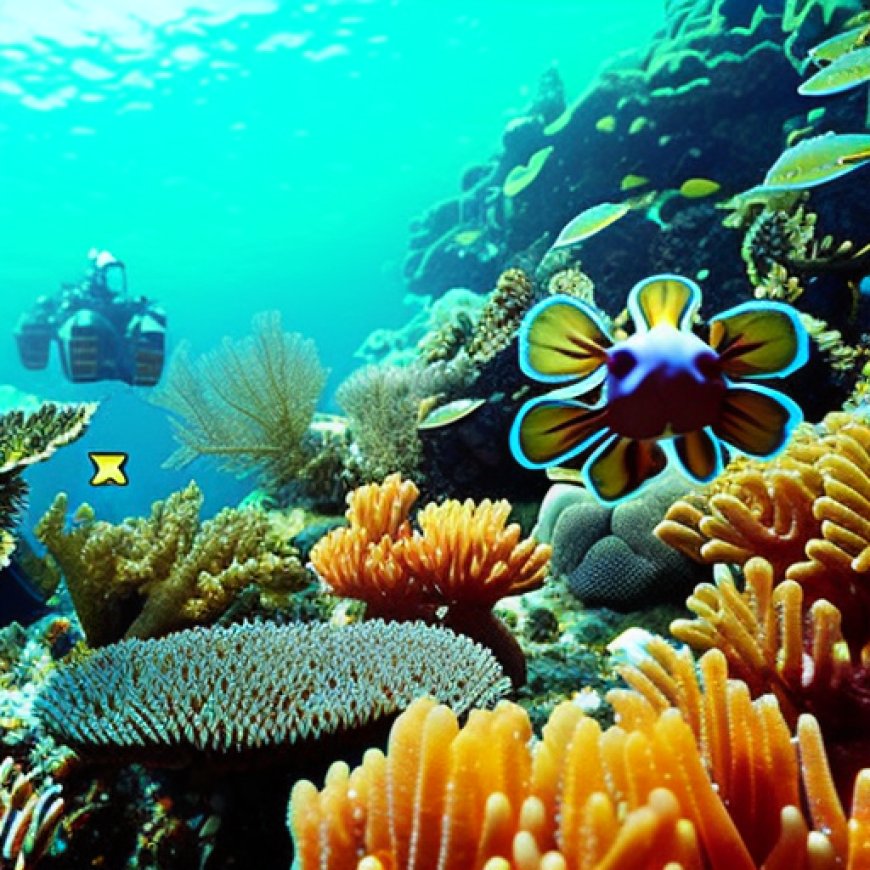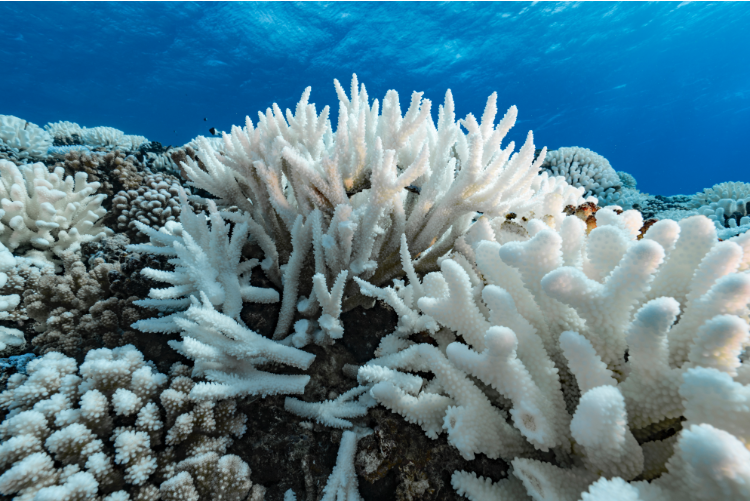Can Science Save Our Coral Reefs? | OpenMind
Can Science Save Our Coral Reefs? | OpenMind BBVA OpenMind


Mass Global Coral Bleaching Event Threatens Sustainable Development Goals
Our planet is currently experiencing its fourth mass global coral bleaching event, with soaring ocean temperatures causing corals in the three major ocean basins to bleach. This event, predicted to be worse than the previous one from 2014-2017, poses a significant threat to the Sustainable Development Goals (SDGs) set by the United Nations.
- The loss of coral reefs endangers a quarter of all marine life and disrupts ecosystems.
- If current ocean warming and acidification trends continue, most coral reefs could go extinct by 2050.
- Researchers are determined to find solutions to save coral reefs and achieve SDG 14: Life Below Water.
What are Corals?
Corals are animals related to sea anemones or jellyfish. They form colonies made up of genetically identical polyps that use calcium carbonate to construct cup-shaped structures. These colonies can grow into the largest biological structures on Earth, such as the Great Barrier Reef in Australia.

Corals also have a symbiotic relationship with tiny marine algae called zooxanthellae. The algae live in the polyps’ tissues and provide them with compounds for photosynthesis, while the polyps offer a protected environment. This relationship gives corals their unique colors.
However, when water temperatures rise, the algae produce toxins harmful to the corals. The polyps expel the algae, causing the coral to bleach and turn white. While bleached coral is not dead, it becomes vulnerable to disease and starvation without its primary energy source. If temperatures decrease quickly enough, the algae can recolonize the polyps and the coral may recover over time.
Can Science Restore Damaged Reefs?
Various conservation initiatives aim to restore damaged reefs, with two notable methods being cloning and Coral IVF.
- Cloning involves growing micro-fragments of live coral in tanks on land before reintroducing them to damaged reefs. While effective, this approach is expensive, labor-intensive, and lacks genetic diversity.
- Coral IVF captures coral eggs and sperm during spawning and uses assisted reproduction techniques to create genetically diverse individuals. These larvae are then attached to seeding units or directly dispersed over damaged reefs.
Challenges and Controversies
There are ongoing challenges and controversies surrounding reef restoration efforts:
- Genetically modifying corals or zooxanthellae to enhance thermal tolerance is a promising but complex task with potential unintended consequences.
- Some experts argue that restoration projects are a distraction from addressing the root cause of coral reef decline: climate change.
The Future of Coral Reefs
A breakthrough in coral cryopreservation techniques offers hope for the future. Researchers have successfully frozen and revived coral fragments using a method called isochoric vitrification. This technique, if widely deployed, could secure the genetic diversity of coral reefs and contribute to SDG 14.

Ultimately, the fate of coral reefs rests on our ability to reduce carbon emissions and address climate change. Without significant progress in these areas, the hope of saving corals may rely on future scientists and cryogenically frozen genetic material stored in biorepositories worldwide.
Neil Larsen
SDGs, Targets, and Indicators
-
SDG 14: Life Below Water
- Target 14.2: By 2020, sustainably manage and protect marine and coastal ecosystems to avoid significant adverse impacts, including by strengthening their resilience, and take action for their restoration in order to achieve healthy and productive oceans.
- Indicator 14.2.1: Proportion of national exclusive economic zones managed using ecosystem-based approaches.
- Indicator 14.2.2: Progress by countries in the degree of implementation of international instruments aiming to combat illegal, unreported and unregulated fishing.
-
SDG 13: Climate Action
- Target 13.1: Strengthen resilience and adaptive capacity to climate-related hazards and natural disasters in all countries.
- Indicator 13.1.1: Number of deaths, missing persons and directly affected persons attributed to disasters per 100,000 population.
- Indicator 13.1.2: Number of countries that adopt and implement national disaster risk reduction strategies in line with the Sendai Framework for Disaster Risk Reduction 2015-2030.
Table: SDGs, Targets, and Indicators
| SDGs | Targets | Indicators |
|---|---|---|
| SDG 14: Life Below Water | Target 14.2: By 2020, sustainably manage and protect marine and coastal ecosystems to avoid significant adverse impacts, including by strengthening their resilience, and take action for their restoration in order to achieve healthy and productive oceans. | Indicator 14.2.1: Proportion of national exclusive economic zones managed using ecosystem-based approaches. Indicator 14.2.2: Progress by countries in the degree of implementation of international instruments aiming to combat illegal, unreported and unregulated fishing. |
| SDG 13: Climate Action | Target 13.1: Strengthen resilience and adaptive capacity to climate-related hazards and natural disasters in all countries. | Indicator 13.1.1: Number of deaths, missing persons and directly affected persons attributed to disasters per 100,000 population. Indicator 13.1.2: Number of countries that adopt and implement national disaster risk reduction strategies in line with the Sendai Framework for Disaster Risk Reduction 2015-2030. |
Analysis
The article discusses the current mass global coral bleaching event, which is connected to the issue of climate change and its impact on marine ecosystems. The following SDGs, targets, and indicators are relevant:
SDG 14: Life Below Water
This SDG focuses on the conservation and sustainable use of oceans, seas, and marine resources. The article highlights the need to sustainably manage and protect marine ecosystems, which aligns with Target 14.2. The indicators mentioned in the article, such as the proportion of national exclusive economic zones managed using ecosystem-based approaches (Indicator 14.2.1) and the progress in implementing international instruments to combat illegal fishing (Indicator 14.2.2), can be used to measure progress towards this target.
SDG 13: Climate Action
This SDG aims to combat climate change and its impacts. The article emphasizes the role of climate change in the coral bleaching event and the need to strengthen resilience and adaptive capacity to climate-related hazards. This aligns with Target 13.1, which focuses on building resilience to climate-related disasters. The indicators mentioned in the article, such as the number of deaths and directly affected persons attributed to disasters (Indicator 13.1.1) and the adoption of national disaster risk reduction strategies (Indicator 13.1.2), can be used to measure progress towards this target.
Copyright: Dive into this article, curated with care by SDG Investors Inc. Our advanced AI technology searches through vast amounts of data to spotlight how we are all moving forward with the Sustainable Development Goals. While we own the rights to this content, we invite you to share it to help spread knowledge and spark action on the SDGs.
Fuente: bbvaopenmind.com

Join us, as fellow seekers of change, on a transformative journey at https://sdgtalks.ai/welcome, where you can become a member and actively contribute to shaping a brighter future.







